Cat Lau, guest contributor
Since moving to Montreal, I have had the opportunity to work with some incredible people involved in the field of science communication and sciart. One such person is Dr. Cristian Zaelzer-Perez, the founder of the Convergence Initiative, a non-profit that aims to advance knowledge in both neuroscience and art through interdisciplinary collaborations. At the core of this initiative is a course he co-created with Bettina Forget (artist/researcher) and teaches at Concordia University. It brings together students from the science and art disciplines to learn from each other and create art inspired science.
Cristian was recently awarded the Society for Neuroscience Science Educator Award (supported by The Dana Foundation) which recognizes neuroscientists who have made outstanding contributions to public education and awareness of the field.
I had the pleasure of sitting down with Cristian for a chat. We talked about his ongoing journey through the intersection of art and science and his unwavering dedication to the Convergence Initiative. This interview has been edited for clarity and length.
~
Cat: I wanted to start off by asking about your relationship with art and science. Tell me a bit about your journey.
Cristian: I have had a relationship with art and science ever since I have had memory. As a child, I loved to do classifications, from grouping different flowers to collecting leaves by their shapes. At the same time, I really loved to draw them and for me, both things never looked different; they (art and science) have always worked together.
I started as a graphic designer, but the pursuit to learn about nature was never dead. At some point, I knew I wanted to go back to school to do research, to explore and learn new things. I started studying medical technologies, then molecular biology and then jumped into a PhD. At that point, my life as a graphic designer slipped down, because of the focus you have to give to the discipline. It seemed like every time I tried to dedicate myself to one thing, I would find myself doing the other thing a couple years later.
I came to Montreal to do my post-doc, but I had trouble publishing, which became problematic in getting a career. I was still loving what I was doing, but not seeing a future in that. Once again, art came back into my life and at the same time I saw that science was becoming really hard to understand and scientists were not doing much to bridge the gap.
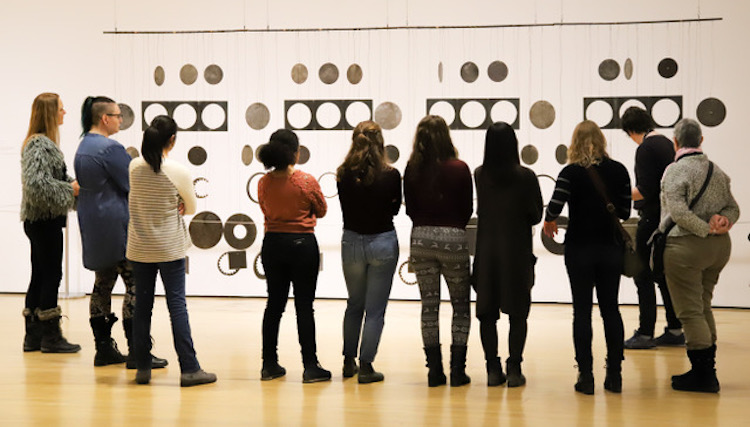
Students from the 2018–19 cohort observe an artwork at the Musée d’art contemporain de Montréal as part of the “White Box” event, where students explore the contemporary art scene in Montreal. Photo credit: Cristian Zaelzer-Perez
Cat: Tell me more about the intersection of art and science, particularly how the Convergence Initiative fits in?
Cristian: One of the first rationales was to bring design into science communication. My background is in design, so it just seemed natural to me. You are trying to find a graphic solution to explain a problem, so in that sense I follow a method similar to the scientific method.
I thought if we have these communication problems, then this is a way we can help better present information. But then I realized science communication is not just a problem of visually communicating science, it also depends on how people see and feel science.
You can use graphic design as a tool, but it’s not a complete solution. It doesn’t bridge the emotional part to the people you want to reach. If we want to be effective with our science, we need to produce these messages that are understandable and able to move you. That’s what you get when you combine science and art, and this is the essence of the Convergence Initiative.
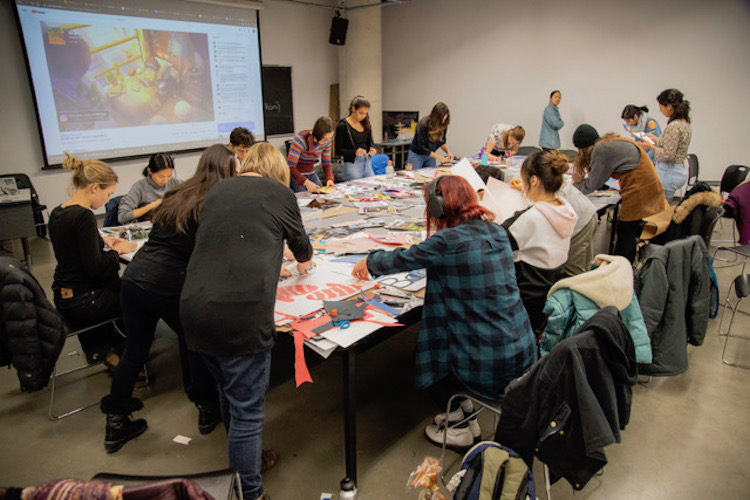
Students from this year’s cohort create hand-made research posters based on principles of graphic design they learned at the beginning of the class. Photo credit: Cristian Zaelzer-Perez
Cat: In an ideal world, where would you like to see the Convergence Initiative in the future?
Cristian: In an ideal world, I would love to see Convergence as an institution, where people can take courses in science communication, art, to do research, and find better methods to reach people. We would have talks, experiments, exhibitions, events. One of the things I would love is a conference for the people. We have conferences for neuroscience and other fields, but we don’t really have any conferences for the people, where you register for free and experience science and art.
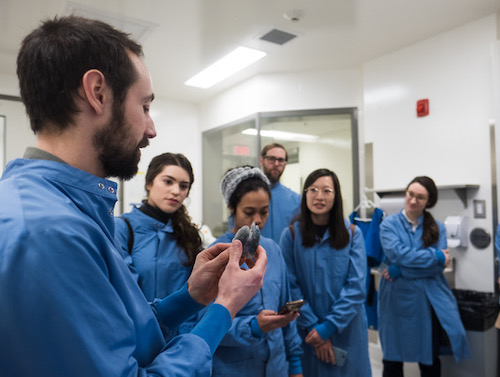
Students from the 2018–19 cohort visit Technology Platforms at the Research Institute of the McGill University Health Centre as part of the “Black Box” event, where students explore labs and spaces where science takes place. Photo credit: Alex Tran
Cat: One of the biggest challenges in public engagement in science is developing trust. How do scientists and science communicators build trust with the general public?
Cristian: To me, the best way to build trust is to be honest but in a tactful way and consider other people’s feelings, backgrounds, and ideas. I think we fail to do this sometimes, especially when we’re so focused on our jobs. We get frustrated when people don’t get our point, but honesty is important in communicating science. We should always be open to ideas and recognize the limits we have. I think by doing this, we would humanize science and bring people near[er] to the practice [of science].
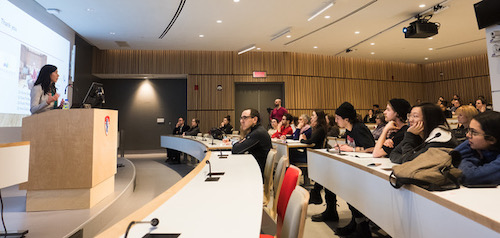
A Convergence Initiative Sci–Art Art–Sci Talk features Dr. Stefanie Blain-Moraes, who shared her research story involving music, science and technology that led her to creating Biomusic, a technology that can provide a means of communication through sound for those who struggle to move and speak. Photo credit: Alex Tran
Cat: Finally, what are your words of wisdom to the general public and for people (artists, scientists, science communicators) interested in pushing for cross-disciplinary collaboration?
Cristian: If I had to talk to the general public, I would say, “Don’t let that curious child in you die. Always be curious and don’t be worried about people who laugh at you for being amazed at nature, because it’s an amazing thing to be alive. Don’t be afraid to experiment and try new things. It has been proven by neuroscience: the more curious you are, the longer you live. The brain is healthier when you learn new things, so always stay curious!”
For the others, my advice is that you need to be very persistent. At the beginning, nobody wants to see change. We’re usually comfortable with what we have, and trying to push ideas is always complicated. There’s always resistance, and new ideas need demonstration and then you need money, so persistence is key. I am super glad about what I’m doing even though it does get very hard. I have the opportunity to talk to people and to see my students crossing bridges to go from one discipline to another and enjoying it.
~30~
Banner image: Cristian Zaelzer-Perez receives the Science Educator Award at the 2019 Society for Neuroscience Meeting from Dr. Diane Lipscombe (past president of the Society for Neuroscience). Photo credit: Joshua Wyrosdic

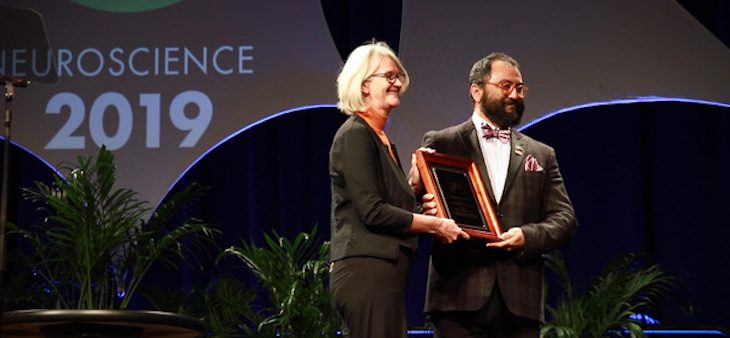



One thought on “Converging art and science: An interview with Cristian Zaelzer-Perez”
Comments are closed.